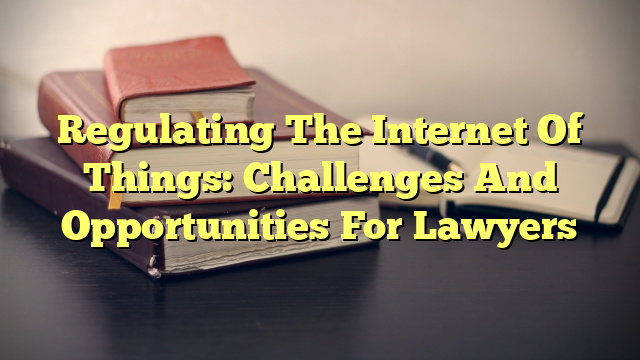Table of Contents
Introduction
The Internet of Things (IoT) is a network of physical objects, sensors, and machines connected to each other and the internet. These “things” can communicate with each other and exchange information without the need for human intervention. IoT is transforming the way people interact with the world around them and is creating a massive shift in the global economy. As the number of connected devices increases, so do the number of regulatory challenges posed by IoT. This paper will discuss the regulatory issues with IoT, the challenges of creating legal frameworks for IoT, and the implications of IoT regulation.
Regulatory Issues with IoT
The growth of IoT has introduced a number of regulatory issues. One of the biggest regulatory issues is data privacy and security. IoT devices are able to collect and exchange vast amounts of data, which can be used for a variety of purposes, some of which may not be in the best interest of the user. As such, it is essential for lawmakers to create regulations that ensure that users’ data is not misused or abused. Additionally, the use of IoT devices can create a number of cyber security risks, as these devices are often vulnerable to cyber attacks. Therefore, it is essential for lawmakers to create regulations that address these security risks.
In addition to data privacy and security, IoT has created a number of other regulatory issues. For example, there are concerns over the use of IoT devices in public spaces, such as smart cities, as these devices can be used to monitor citizens’ activities. Additionally, there are concerns over the use of drones and autonomous vehicles, as these devices can be used to invade people’s privacy. Finally, there are concerns over the use of IoT devices in healthcare, as these devices can be used to collect sensitive medical information.
Challenges of IoT
IoT has introduced a number of challenges for lawmakers. These challenges can be divided into three main categories: creating legal frameworks for IoT, ensuring privacy and security in IoT, and regulating the growing number and complexity of IoT devices.
Creating Legal Frameworks for IoT
The first challenge is to create legal frameworks that address the unique issues posed by IoT. As the technology continues to evolve and become more pervasive, lawmakers must ensure that their regulations keep up with the changing technology. Additionally, lawmakers must consider the different types of IoT devices and the different ways in which these devices can be used. For example, some IoT devices may be used for commercial purposes, while others may be used for personal use. Therefore, it is essential for lawmakers to create regulations that address the different uses of IoT.
Ensuring Privacy and Security in IoT
The second challenge is to create regulations that ensure the privacy and security of IoT devices. As mentioned previously, IoT devices are able to collect and exchange vast amounts of data, which can be used for a variety of purposes. Therefore, it is essential for lawmakers to create regulations that address the potential misuse or abuse of this data. Additionally, as IoT devices are often vulnerable to cyber attacks, it is essential for lawmakers to create regulations that address these security risks.
Regulating the Growing Number and Complexity of IoT Devices
The third challenge is to create regulations that address the growing number and complexity of IoT devices. As the use of IoT devices increases, so does the number of

